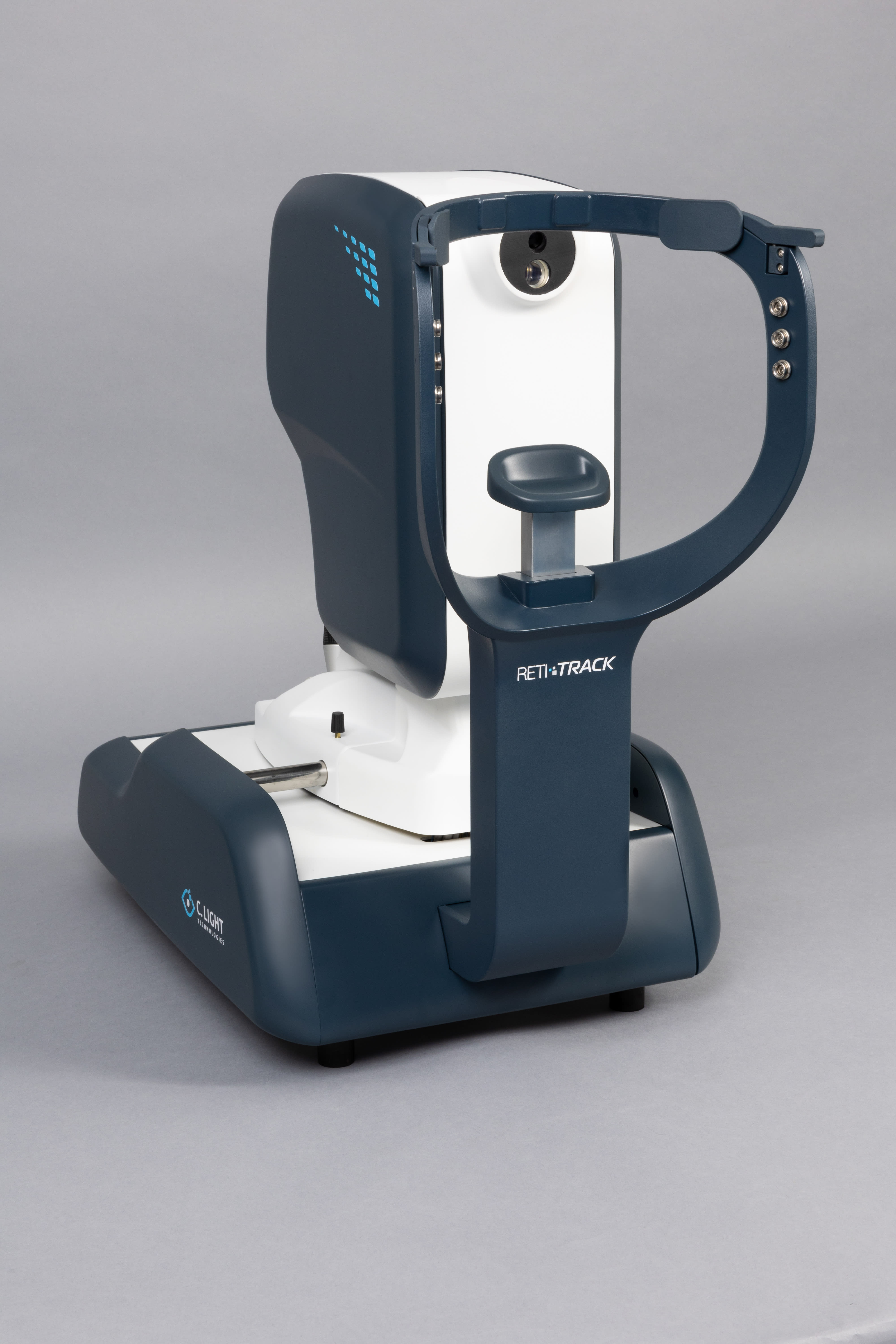C. Light Technologies’ Retitrack provides new understanding and insight into oculomotor function via the retina, offering concrete and objective metrics to retina specialists such as the causes of visual dysfunction that are beyond the retina and optic nerve. Retitrack is a monocular, tabletop eye movement monitor that can record, view, measure, and analyze an individual’s temporal characteristics of fixation and saccadic responses when they are viewing a visual stimulus.

While studying how fixational eye motion changed during the course of neurodegeneration for her postdoctoral work at University of California, San Francisco, Christy K. Sheehy, PhD, recognized that data on oculomotor function would be very useful to retina clinics. Dr. Sheehy subsequently founded C. Light Technologies, which she serves as CEO, establishing the company’s mission to use the power of the eye-brain connection to improve health outcomes.
“Fixational eye movements are the finest recordable motor movements and fixation itself reflects visual attention,” says Ari J. Green, MD, chief of the division of neuroimmunology and glial biology; director of neurodiagnostics; and a neurologist/neuro-ophthalmologist at University of California, San Francisco, who helped develop the product. “Understanding that motor function can be impaired in neurodegenerative disease made it compelling to try to understand early oculomotor dysfunction.”
How It Works
Retitrack operates by recording 10-second, high-resolution retinal videos at the photoreceptor level, allowing for the quantification of eye motion down to 0.1°. Its accompanying software extracts and analyzes both fixation (microsaccades and drift) and saccadic eye movements in real time, and generates a comprehensive summary report for clinical interpretation, Dr. Sheehy says.
The device uses invariant features of the photoreceptor mosaic to monitor eye movements at the finest scale imaginable. “It’s a remarkable feat of engineering and promises to enable recording and ongoing follow-up in a way that would never be possible without a standardized protocol for tracking,” Dr. Green says.
What It Can Do
The Retitrack provides clinicians with user interface fixation stability plots, microsaccade and drift metrics, and a fixational time series plot of amplitude changes over time to observe pattern abnormalities, Dr. Sheehy says. The device also offers horizontal saccade tracking capabilities, providing saccadic accuracy, latency, and speed to clinicians.
Any clinician who currently performs a bedside oculomotor exam, such as “look at my finger, look at my nose,” or “follow my finger” can use the device to assess oculomotor function. Common complaints of individuals who have problems with their fixational stability are blurriness, visual fatigue, headaches, nausea, and dizziness, with the most common complaints being that the outside world is jittering or shaking, which is clinically known as oscillopsia.
While Retitrack doesn’t diagnose specific conditions, it instead provides objective fixation and saccade data for clinicians to interpret.
“Retitrack has the potential to expand retinal evaluation to understand broader neurological dysfunction and decline,” Dr. Green says. “Its greatest future potential is monitoring neurological diseases and providing insight regarding prognosis and possible disease worsening.”
Why Monitor Eye Movement?
To date, retinal devices at clinics have mainly focused on the eye’s structural integrity, such as OCT scans and fundus photos of the retina. “While they provide a snapshot in time to assess retinal structure, they only focus on the health of the afferent visual pathway,” Dr. Sheehy says.
The efferent visual pathway is responsible for generating eye movements and provides objective insight into oculomotor function. Eye motion uses all 4 lobes of the brain and if any one of these areas becomes sick or impaired, eye motion is directly impacted.
“Using both the structural and functional information of the eye creates a more comprehensive picture of patient health,” Dr. Sheehy says.
Ease of Use
Retitrack provides innovative and patented temple pads that can help stabilize a patient’s head during recording. They give 3 points of contact — the chinrest and two temple pads — to minimize external motion. Additional head stability ensures that the subclinical motion data that C. Light Technologies collects isn’t negatively impacted by head motion, Dr. Sheehy says. User training for the device typically takes one morning session. General technicians can run it without the need to dilate patients’ eyes.
"Fixational eye movements have previously eluded clinical quantification, posing a significant challenge to healthcare professionals who aim to improve prognostic care,” Dr. Sheehy says. “With C. Light Technologies’ novel technology, we've unlocked the potential of one of the smallest motor movements in the human body, offering invaluable data that will drive the future of clinical care.”








